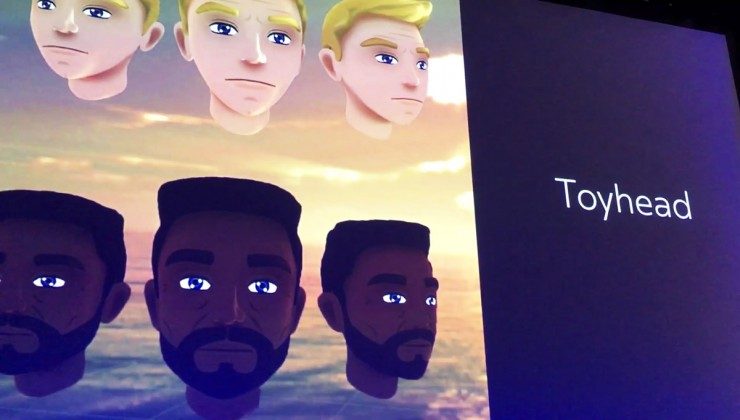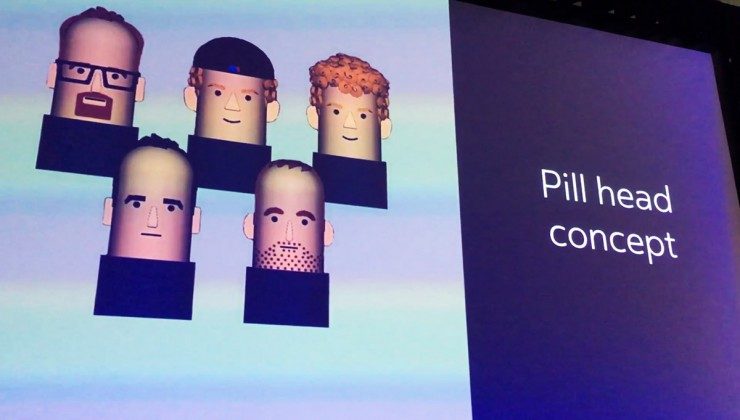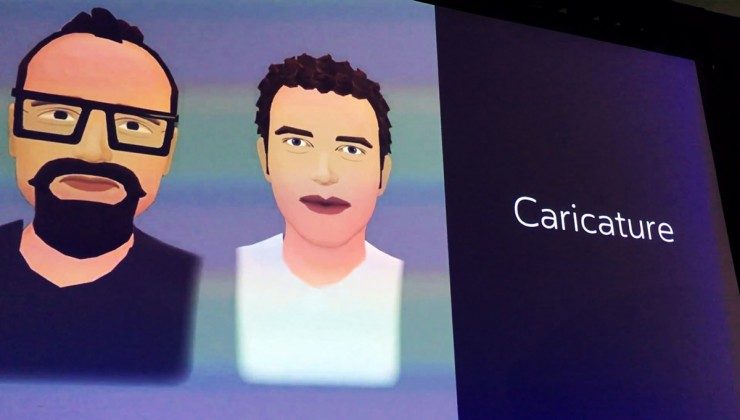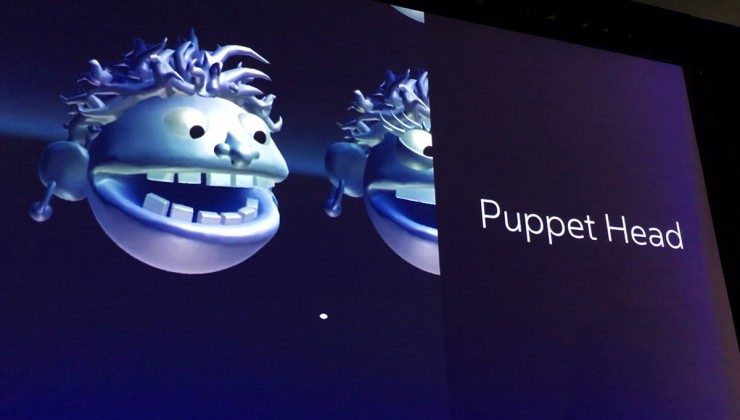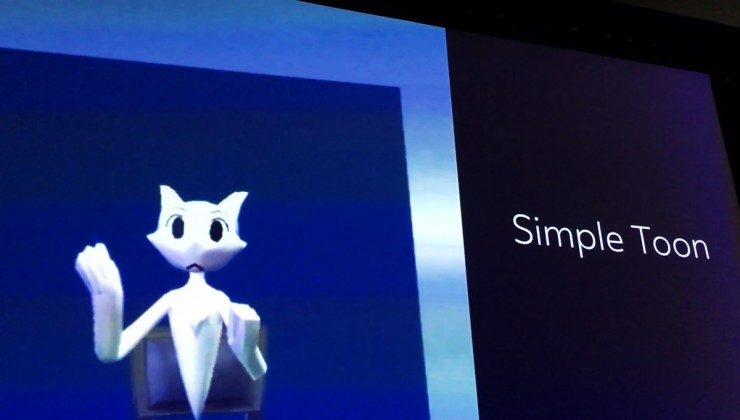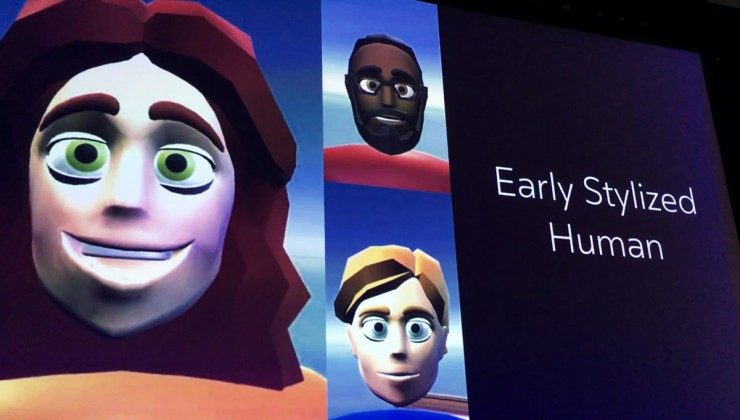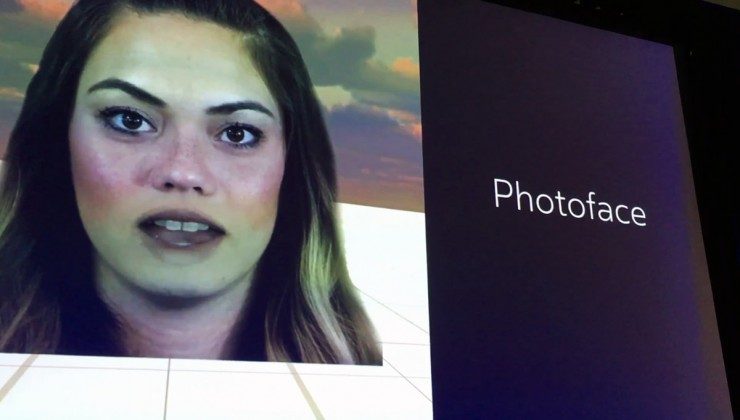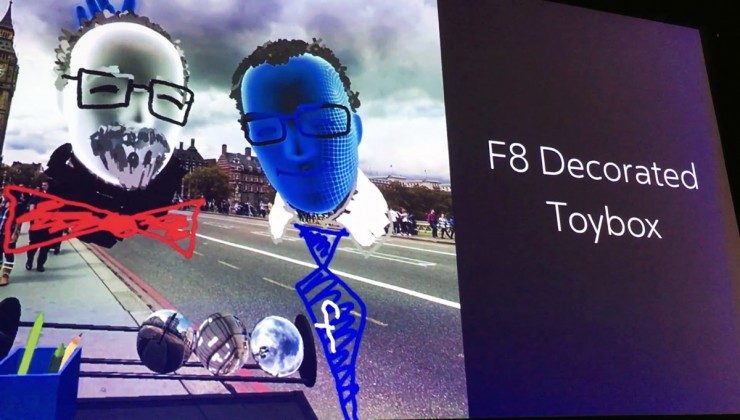Facebook says they want to launch an official social VR experience “as soon as possible;” to get there the company has been experimenting with various approaches to find out which avatars work best for social VR interaction.
During the opening keynote at Oculus Connect last month, Facebook CEO Mark Zuckerberg excitedly showed the latest version of the company’s forthcoming social VR experience. As he put on the headset for a live demonstration, one of the first things he said to his virtual friends was “your avatars look a lot better than the last time that you showed me…” He was referring to an older Facebook social VR demo showed off earlier this year which featured more ‘holographic’ style avatars which had elements like glasses and hair hand-drawn onto them.
Michael Booth, Facebook Social VR Product Manager and one of the two virtual friends virtually on stage with Zuckerberg, was among the team that evolved Facebook’s social VR avatar design to what we see in the latest demo. Speaking later that day in a presentation at the conference, Booth walked through a number of experiments the company has done in an attempt to find the most believable way to represent users in a social VR space.
In the video heading this article, Booth showed that the company clearly aimed to stay away from ‘realistic’ avatars, citing the uncomfortable feeling of the Uncanny Valley as something to be avoided until it can be effectively crossed. That means dropping back to a stylized avatars, but Booth says that even stylized representations of humans can be unsettling and uncomfortable to engage with while in VR.
While avatars in VR could be literally anything (a dinosaur, spider, a building, etc), Booth says that Facebook’s policy of “authentic identity” (using your real name and photos of yourself) constrained the avatar design to something necessarily human, and something that could be identified as ‘you’ by people around you.
So while the cute ‘Rabbitar’ that the team developed was surprisingly effective as a believable avatar, it didn’t quite fit the prompt. However, lessons from the Rabbitar, specifically its simple eyes and mouth, carried over to other experiments, and ultimately found their way into the latest avatars that Zuckerberg showed off on stage. Booth summarized what the company has learned so far and what they think makes for a believable avatar in VR:
Speech – with positional audio)
1:1 Tracking – don’t break it with animations
The importance of hands – for gesturing while you speak and interactions with the environment
Eye contact/blinking – procedural blinking works fine, as long as blinking is happening
Gaze following – creates the connection of someone looking at you and allow lets you natually follow their gaze to others
Lipsync – an important visual queue to show who is talking
Emoting – helps add emotion and emphasis while we wait for more advanced facetracking technology
Arms and body – avatars seen in a third-person view should have arms and rather than just a floating head and hands (the first person view should not show arms and body because the tracking is not precise enough)
That’s not to say that Facebook’s social VR team has dusted their hands and called their work on avatars complete… Booth says even about the latest avatars, “this is still a work in progress, we still are experimenting and we plan to continue to evolve these avatars over time.”
Curiously, despite being owned by Facebook, Oculus is taking its own approach to avatars, and in fact debuted an entirely new avatar paradigm at the same conference, which the company says can be persistent between apps and cross platform between Rift and Gear VR. Their approach is even more stylistic and doesn’t aim for “authentic identity” as the Facebook avatar system does.
Though we’re learning more about what types of avatars feel comfortable to interact with in VR, the problem is far from solved for those looking for one consistent representation of their virtual selves across all social virtual spaces.

